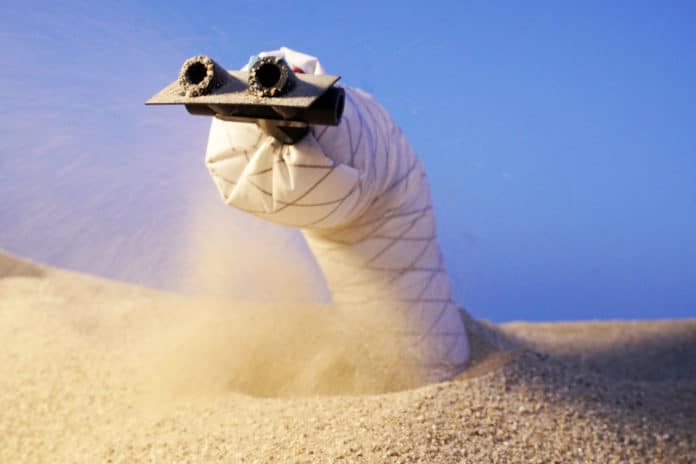We’ve seen robots take to the air, dive beneath the waves and perform all sorts of maneuvers on land. However, one frontier for robotic locomotion remains largely unexplored – below ground. Now, researchers at UC Santa Barbara and Georgia Institute of Technology have developed a fast, controllable soft robot that can burrow through the sand.
Subterranean navigation is simply hard to do, in part because the interaction forces of underground motion are higher than in air or water, which offer little resistance to objects moving through them. “If you’re trying to move through the ground, you have to push the soil, sand, or another medium out of the way,” said Nicholas Naclerio, a graduate student researcher.
Gaining a mechanical understanding of how plants and animals have mastered subterranean navigation opens up many possibilities for science and technology. The new vine-like soft robot designed in the Hawkes Lab mimics plants and the way they navigate by growing from their tips while the rest of the body remains stationary. In the subterranean setting, tip extension keeps resisting forces low and localized only to the growing end. If the whole body moved as it grew, friction over the entire surface would increase as more of the robot entered the sand until the robot could no longer move.
To overcome the high level of resistance presented by sand or loose soil, the new sand-burrowing robot in the form of a tip-based flow device shoots air into the region just ahead of the growing end, enabling it to move into that area.
“The biggest challenge we found and what took the longest to solve was when we switched to horizontal burrowing; our robots would always surface,” Naclerio said. In fluidized sand, the distribution of forces is not as balanced and creates a significant lift force for the horizontally traveling robot. It’s much easier to push the sand up and out of the way than it is to compact it down, he explains.
In sand, the downward airflow reduced the lift forces and excavated the sand below the robot’s growing tip. This, combined with inspiration from the sandfish lizard, whose wedge-shaped head favors downward movement, allowed the researchers to modulate the resisting forces and keep the robot moving horizontally without rising out of the sand.
Such a small, exploratory, soft robot has a variety of applications where shallow burrowing through dry granular media is needed, such as soil sampling, underground installation of utilities, and erosion control. Tip extension enables changes in direction while also allowing the body of the robot to modulate how firmly anchored it is in the medium – control that could become useful for exploration in low gravity environments.
